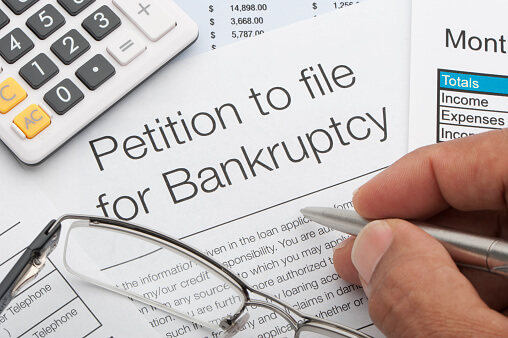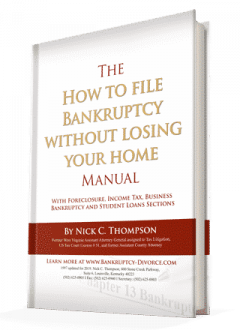Insolvency and bankruptcy are typically used as synonyms, and if you Google the term bankruptcy, you will find out many people are using terms interchangeably – and vice versa.
And the reason behind this synonymous usage of insolvency and bankruptcy is that the definitions make them look similar; that’s why Google presents them as synonyms. But actually, they are not the same!
While not massive, there is still some difference between insolvency and bankruptcy. In this brief blog post, we will discuss how both differ and how a skilled and professional bankruptcy attorney can help you in such a scenario.
Before diving into the details of each term, let us briefly look at the basic definitions. Let’s get started!
Insolvency – A Brief Introduction
In simple words, Insolvency is when a person, company, or business cannot pay back its outstanding debts. Entities unable to pay back their debts on time are generally referred to as ‘Insolvent.’ Such circumstances may occur due to their cash flow or balance sheet interruptions. Insolvency does necessarily means bankruptcy insolvency.
Suppose there is a lack of positive cash flow. In that case, repayment of debts becomes nearly impossible. It so does the lack of financial liquidation in their balance sheet, resulting in an individual or a business being Insolvent for a balance sheet insolvency. Have a detailed discussion with the licensed insolvency trustee to discuss your options and discover the right solution.
A Simple Example of Insolvency
Suffering from Insolvency is generally quicker than you might think. This slippery slope to Insolvency can begin with the following:
- Loss of a huge business contract: a client you depended on could suddenly switch with the suppliers.
- Loss of customers: your customers no longer need your products or switch to any other supplier, or your services or products become irrelevant to the market.
- Suffering from the cash flow crisis: you might have overspent, or customers are not clearing their dues on time.
Furthermore, unaccounted or unexpected costs, like lawsuits, can lead to Insolvency. If your business is sued, you have to pay vast amounts to recover the damages, which can be severely damaging if you don’t have a successful backup plan or an appropriate cover.
Bankruptcy – A Quick Overview
Primarily, bankruptcy is a legal declaration that an individual makes when they cannot pay their outstanding debts, nor will they be capable of paying them any sooner. In bankruptcy filing, an individual must file a petition in court to gain assistance in managing their debts and take help to reorganize and repay them.
Essentially, bankruptcy offers both companies and individuals an opportunity to take a fresh start with their finances. The bankruptcy process helps them by forgiving some debts, reorganizing payment and financing plans, and liquidating assets to return the creditors’ debts.
A Simple Example to Understand Bankruptcy
Consider a person named John who works in a bank. Since he was doing well in his job, he decided to buy a luxury car on credit. However, after a few months, the bank chooses to make a massive portion of its workforce redundant, making John unemployed.
John begins struggling to find a ne job but cannot find it for a year.
What is the result?
He withdraws from an overdraft to pay the car debt, but his debts start to pile up. He used his credit card to get by, but before he knew it, he had piled up so many debt payments and didn’t have any way of earning to pay them back.
With the creditors calling him regularly, he chooses to file for bankruptcy. John files a bankruptcy petition, and once the bankruptcy process is approved, the bank sells off his car to pay off his debts, and bankruptcy will remain on his credit history for 6 years.
Types of Bankruptcy Filings
There are several types of bankruptcy filings, depending on an individual or company’s situation and financial distress. These include Chapter 7, Chapter 13, Chapter 9, Chapter 15, Chapter 11, and Chapter 12. Among all, the most common are Chapter 7 bankruptcy and Chapter 13 bankruptcy. Let us dig a little deeper to look at the criteria for each of them.
Chapter 7 Bankruptcy
Bankruptcy Chapter 7 is also known as Liquidation Bankruptcy. The most popular form of legal proceeding of bankruptcy entails selling or liquidating a person’s or business’s assets to pay off the creditors’ debts.
Chapter 9 Bankruptcy
Chapter 9 bankruptcy is a legal declaration reserved for municipalities. These municipalities may refer to counties, cities, towns, and sometimes school districts. They can file bankruptcy petitions for Chapter 9 bankruptcy. These municipalities can protect themselves from creditors. At the same time, they can develop a plan for the reorganization in repayment of their debts.
Chapter 11 Bankruptcy
Like Chapter 7 bankruptcy, chapter 11 bankruptcy is available for individuals and businesses. However, unlike chapter 7 bankruptcy, this chapter operates to reorganize debts and allows the debtor to stay in control of their healthy business.
Moreover, in Chapter 11 bankruptcy, the debtor also has an opportunity to renegotiate with the creditors on repayment terms and conditions, such as interest rates and value of payments.
While bankruptcy Chapter 11 allows all businesses and companies to keep their business intact and become healthy and beneficial businesses, it is often the most complicated form of bankruptcy—additionally, the most expensive type of bankruptcy proceeding per the observations and rules.
Chapter 12 Bankruptcy
Bankruptcy Chapter 12 is a legal process designed for family fishermen and farmers. As per this plan, family farmers and fishermen may file a bankruptcy petition under a stressful financial state and can structure a repayment plan to repay the creditors in 3 to 5 years.
Chapter 13 Bankruptcy
Bankruptcy Chapter 13 is also known as “Wage Earner’s Plan.” Deciding on whether or not to file a Chapter 13 bankruptcy typically means considering the advantages and disadvantages of reorganizing the debts and selling assets to pay off the creditors.
Nevertheless, the Chapter 13 bankruptcy plan is limited to people with a regular income stream. It helps people develop a new repayment plan to return a certain amount of their debt or total debts over a specified period.
Chapter 15 Bankruptcy
Chapter 15, bankruptcy, is the last of all the bankruptcy chapters. It was added to the US Bankruptcy Code in 2005 – it deals with bankruptcy cases involving more than one country.
Consider a person with debts and assets in various countries should file a bankruptcy petition under bankruptcy Chapter 15. The primary motive of this bankruptcy petition is to help and cooperate between the foreign debtor, foreign courts, and the US bankruptcy court.
Difference Between Insolvency and Bankruptcy – The Basic Difference
The significant difference between the two is: Insolvency is the financial state or state of a person in which they are actually in. Bankruptcy is all about the legal declaration of your financial condition and asking for assistance. However, if a person is insolvent, they can’t file an insolvency petition.
Have a look at the situation this way: if a person is in a state of insolvent, the only solution to get rid of the problem is bankruptcy.
Since being bankrupt and suffering from Insolvency are two different financial situations, many people use the word ‘bankrupt’ to describe the financial situation of a company, business, or a person who is seemingly broken and can not pay off their financial obligations and debts. However, this is a misuse of the term. The word that perfectly describes this situation is Insolvency.
The term ‘bankrupt’ is used when the entity or an individual has filed a petition for bankruptcy in the court declaring they cannot pay debts, as bankruptcy involves a legal process for liquidating the assets and reorganizing the payment plan to pay off later.
On the other hand, Insolvency is merely a financial condition someone might be in when their debts exceed their assets. We can say that a bankrupt person can also be insolvent, but an insolvent individual is not essential to be bankrupt.
In addition, if a person is insolvent, it is not necessary to contact the court to sort out the repayment plan; in case of bankruptcy, getting to court is crucial.
Preventive Measures Against Bankruptcy and Insolvency
It is essential to thoroughly understand the difference between insolvency and bankruptcy and spot the warning signs early to take preventive measures to benefit your business or your stable financial state. Prudent budgeting and bookkeeping can be helpful to keep you at the top of your cash flow.
Keep in mind: even if the business is very successful and running, it can be insolvent if the finances are not adequately planned or managed. You might have significant assets yet still be insolvent due to poorly handled finances.
Why You Need a Professional Bankruptcy Attorney to Get a Repayment Plan?
Remember, though you understand the difference between insolvency and bankruptcy, you might not be in a stable financial situation or even be Insolvent; you are still not bankrupt. However, Insolvency can be an indicator for you to file for bankruptcy. If you are suffering from a difficult financial situation and are afraid you cannot develop an effective plan, consider talking to an experienced bankruptcy attorney. Professional assistance can help you to get out of an insolvency and bankruptcy situation.
Book now a free consultancy session to develop a practical and helpful repayment plan and erase your debts from your credit history and take a fresh start with a stable financial condition.
Resources for Bankruptcy
Getting Started with Your Bankruptcy
Louisville Kentucky Bankruptcy Forms
Getting Your Fresh Start Through Bankruptcy
Your Fresh Start on a New Budget with Bankruptcy
Nick Thompson – Kentucky Foreclosure & Bankruptcy Attorney
If you are considering bankruptcy, don’t delay because timing is crucial. I am here to help you. So, contact my office right away to start the conversation. Nick C. Thompson, Bankruptcy Lawyer: 502-625-0905.






